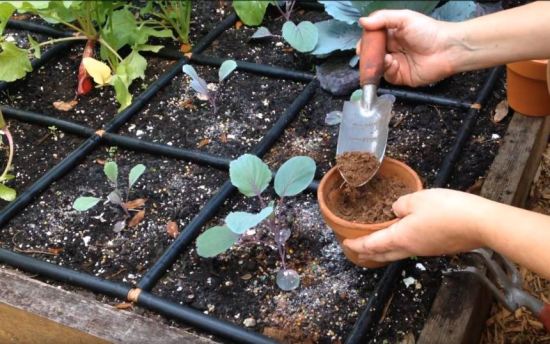
Spring Soil-Prep Steps for Busy People
Photo from Garden In Minutes®
Originally Posted On: https://www.motherearthnews.com/organic-gardening/spring-soil-prep-steps-for-busy-people-zbcz1712/
Spring Soil-Prep for Busy People
From the beginning of November to the end of January, our schedules take on the hefty holiday burden. Dinners, celebrations, shopping, new resolutions, travel, family, and friends fill up the remaining vacancies on our schedules, and next thing we know…it’s February! With the cold weather, gardeners who aren’t raising a winter garden often put their gardens ‘to rest’ during these busy times. Gardeners who want to start fresh in the spring, prep their gardens for winter by hanging up their garden irrigation system and sheltering the soil from harsh conditions with a thick insulator. Although it may hurt to see such a dreary patch where our illustrious gardens usually sit, we can rest easy knowing it will be there, ready for the springtime planting.
Generally speaking, people are very busy and we don’t want to add another item to your list. Understandably, many of us want to return to normalcy after the crazy holidays, and that may mean the garden is never returned to former glories. Luckily, preparing a garden for springtime planting doesn’t take much effort at all! All it takes is a few simple steps, and rich, black soil will be ready for new life.
When Should I Think About Soil Prep?
You want to begin preparing your garden after the last frost date within your Hardiness Zone. This isn’t an exact science, but you can use an online resource like the Farmers’ Almanac to see the previous years last frost to give yourself a date to work with.
What Should I Do First?
Maintenance and repairs. Before you get your hands dirty mixing up the soil and adding nutrients, the garden needs to be cared for. Maintenance includes cleaning your gardening tools, mending supports if needed, testing the irrigation system, and judging the integrity of your raised bed boards. Similar to car maintenance, fix small issues before they evolve into major problems. Cleaned tools, prepped supports, and a strong structure make for a reliable and bountiful garden for the year to come. Of course, starting with quality garden beds and tools mitigate much of this concern and time commitment for the years to come.
Additionally, if you’ve insulated your garden by adding mulch to it during the winter months, now is the time to remove any remnants and fully expose your garden’s soil. Once this layer is removed, you may find some weeds that have found a way to survive through the cold months and coverage. Make sure to clean these from your garden.
When Do I Know the Soil is Ready for Springtime Prep?
The last frost has passed, and your garden area is cleaned. You are dying to dig into that soil and add your first plants, but you’ll need to make sure the soil is hospitable. During the winter months, with less sunlight and lower temperatures evaporation will be less allowing soil to retain more moisture, increasing its density and weight. Wet, compact soil maintains nutrients during the cold months, but the density of this compacted soil isn’t an ideal environment for planting. You will want to turn your soil (basically breaking it up and aerating it) to allow for easier root growth, easier water drainage, and easier absorption of any nutrients/fertilizers you want to add.
Green Thumb Tip: Pick up a handful of soil and ball it up. Then, press on the top of the ball with some pressure. If it wants to stay clumped together and offers resistance, then the soil is still too moist and dense. If it crumbles and gives easily, then the soil is ready for the next step.
Do I Need to Add Nutrients to my Garden?
This depends on the soil’s treatment during winter and your environment. If you planted a cover crop or added a thick layer of mulch onto your soil over the winter months, there’s a good chance your soil maintained more favorable nutrients since both help to retain and add nutrients as they break down into the soil. However, if left exposed, you may need to improve the nutrient quality. Integrating a general well-balanced fertilizer mix or turning compost/manure into the soil at the beginning of a new growing season is usually a useful step to take regardless. If you’re unsure and want a more definitive answer for what your soil needs, simple soil test kits are available at most garden centers.
You are now ready to plant your spring garden. The soil will be freshly loosened and nutrient-filled, ready for planting. Depending on the size of your garden, this entire process should only take a few hours or less. A small amount of time to ensure a long year of fruitful gardening!
